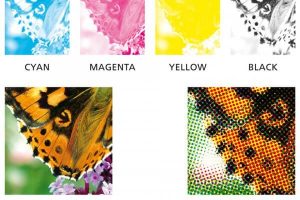Learn how choosing this print method over others will influence your project’s quality, cost and time frame.
Let us explain in easy to understand terms. So you are thinking of developing and printing a brochure or business cards or some flyers, but you don’t quite need a huge quantity of them and your designer or printer mentions that you can consider digital printing to keep your costs down?
You think to yourself, “well that’s a good suggestion (thanks!), but if it’s cheaper will the quality of my job be compromised?”
And then you might think “why do I need to understand this anyway – isn’t printing just printing?”
Well not exactly.
If you are working with a designer and printer, at some stage it is likely you will hear the words digital or offset printing. And you may think to yourself, “Why do I need to know what method they will use? Can’t they just print my job?”
Well yes, they can just print, however there are some valid reasons why they will explain the different print methods. How choosing one method over another will affect your project’s finished result and cost, and why one method may be more suitable over another, specific to your project needs and time frames.
As a customer, you have the enviable position of choice and as designers who offer printing, we believe keeping our customers informed to choose for themselves and become educated along the way, is the most respectful way to do business.
Let’s get on with simplifying what is digital print and the things to consider when choosing it as a print method.
What is digital printing and what does it all mean?
Digital printing is where either an inkjet or laser printer (normally in the form of an industrial sized photocopier) deposits pigment or toner onto paper or larger printers use liquid ink (in the form of industrial sized presses). It is where an image is sent directly to the printer using a digital file, usually a high resolution print ready PDF. Digital printing uses CMYK process colours – CMYK is a mix of cyan, magenta, yellow and black.
The benefits:
- It is a faster method of printing, so quick turnarounds are possible (often you can get your printing the next day, or even the same day if you’re lucky, from artwork submission!)
- It is cost effective for smaller quantities (in most cases, we usually recommend anything less than a quantity of 500 to be printed digitally)
- It requires less manpower to set up and produce than offset printing, saving costs and time
- You can print black and white copies cost effectively
- Often, digital presses can trim, collate, staple as well as other finishing services which save huge amounts of time
- Variable data capabilities are possible and done easily (ie. customising your artwork with an individual person’s name, code, contact details etc)
- You can print on demand – print the amount you need, as and when you need it, saving on waste
The limitations:
- The quality of digital printing is reduced compared to offset printing, with less clarity and sharpness, however with the developments in digital technology, it is fast becoming a comparable print option to offset.
- Not all paper stocks are suitable for digital printing.
- It is not suitable for printing PMS colours, and metallic inks are not possible with digital printing
- Whilst all inks fade over time, in direct sunlight, digital inks will tend to fade quicker than offset inks.
So for your next printing project, consider whether digital printing may be the best option for you. We hope that the above explanation has helped untangle a few of those niggling questions around digital printing, and has given you the information you need to make an informed decision the next time your designer or printer mentions it.
Check out our blog bost about Offset Printing.
Talk to us about whether digital printing is suitable for your next project. Feel free to get in touch!






